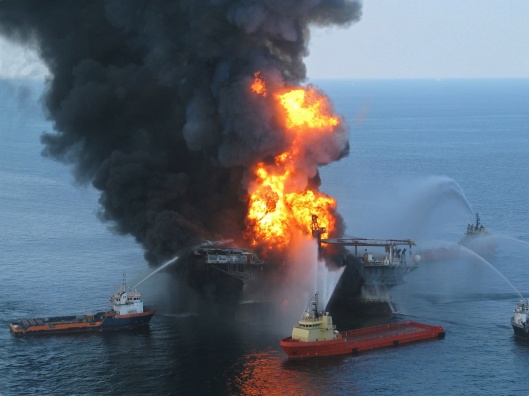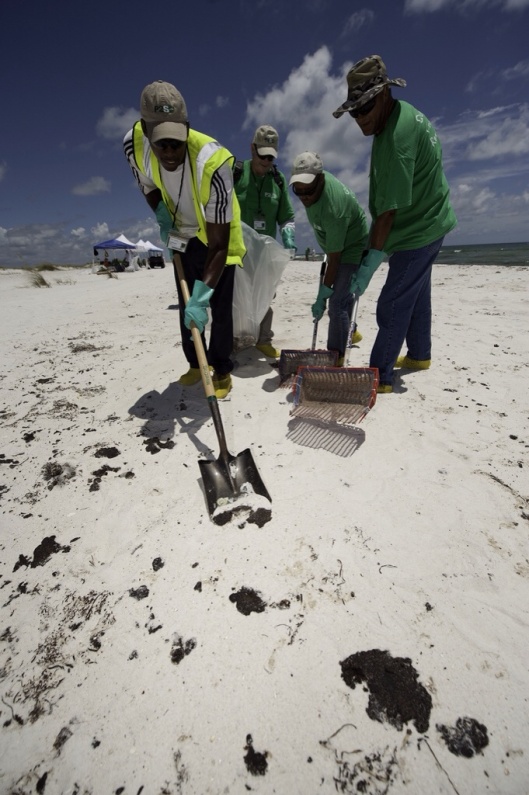Tags
Alaska, beaches, BP oil spill, California, Drilling, Florida, Gulf of Mexico, Louisiana, offshore oil spill, oil and gas, petroleum, tourism, Trump, Zinke
Mueller needs to hurry up already and remove Trump and Zinke. Mueller should recommend tar-balling and feathering as punishment.
In 2017 “Zinke took a number of steps to make it easier to lease and explore for onshore and offshore oil, including removing some safety regulations put into place after the Deepwater Horizon oil spill in the Gulf of Mexico.” (VOA)
If everyone is pumping oil and gas how will they keep prices up? https://miningawareness.wordpress.com/2017/12/15/does-the-flynn-middle-east-nuclear-reactor-deal-include-a-plot-for-a-new-oil-cartel-to-double-the-price-of-oil/
What Florida beaches should look like:

Pensacola Beach white sand U.S. Air Force photo by Tech. Sgt. Emily F. Alley.
What they should not look like: Pensacola Beach Florida after the BP oil spill offshore Louisiana (two states lie in between):

Beach oil and feather Pensacola U.S. Air Force photo by Tech. Sgt. Emily F. Alley

April 2010, US Coast Guard – 100421-G-XXXXL- Deepwater Horizon fire

Dr. Brian Stacy, NOAA veterinarian, prepares to clean an oiled Kemp’s Ridley turtle. (Photo Credit: NOAA and Georgia Department of Natural Resources)
From VOA: “Interior Department Wants to Open 90 Percent of US Continental Shelf to Drilling January 04, 2018 6:31 PM, VOA News
The U.S. Department of the Interior has announced plans to open up 90 percent of America’s coastal waters to oil drilling, including off California and Florida, two areas where activists have worked for years to protect marine ecosystems from oil spills.
The proposed five-year plan released Thursday is much more expansive than one issued by President Donald Trump in April last year. The Interior Department is proposing 47 possible auctions of drilling rights in nearly all parts of the U.S. continental shelf.
It is a major increase from the 11 lease sales during the Obama administration.
The draft plan would allow the sale of drilling leases in 25 of the nation’s 26 offshore planning areas, including 19 areas in the waters around Alaska, seven in the Pacific Ocean, and nine in the Atlantic Ocean.
One area considered off-limits is the waters near Alaska’s far-western Aleutian Islands, which were protected by former President George W. Bush.
“We are going to become the strongest energy superpower this world has ever known,” Interior Secretary Ryan Zinke told reporters Thursday in a conference call.
“We want to grow our nation’s offshore energy industry, instead of slowly surrendering it to foreign shores. We will produce enough energy to meet our needs at home, and we will export enough energy to lead the world.”
Zinke also said in a news release Thursday that “responsibly developing our energy resources” is important to the U.S. economy and will help fund coastline conservation. He said the broad proposal is meant to kick off a “lengthy and robust” public comment period.
“Not all areas are appropriate for offshore drilling, and we will take that into consideration in the coming weeks,” he said.
The Department of the Interior is in charge of setting the start date of the 60-day public comment period.
Some critics of the proposal have already let their feelings be known.
Florida Governor Rick Scott, an ally of Trump, has already vowed to fight attempts to drill in Florida. In a statement Thursday, Scott said, “I have already asked to immediately meet with Secretary Zinke to discuss the concerns I have with this plan and the crucial need to remove Florida from consideration.”
Another Trump ally in Florida, Representative Matt Gaetz, has also said he is opposed to drilling off the Florida coast.
The administration is currently operating under the five-year plan set by the Obama administration, which covers 2017-2022. Initially, President Barack Obama had proposed drilling off the Atlantic Coast and off Alaska’s Arctic shore, but both proposals were dropped in the final plan.
Last year, Zinke took a number of steps to make it easier to lease and explore for onshore and offshore oil, including removing some safety regulations put into place after the Deepwater Horizon oil spill in the Gulf of Mexico.
Eleven people died in the initial explosion on the Deepwater Horizon in 2010, and the resulting oil spill — an estimated total of 4.9 billion barrels over five months — is considered the largest industrial spill in the history of the petroleum industry.” https://www.voanews.com/a/interior-department-wants-to-open-90-percent-of-us-continental-shelf-to-drilling/4192898.html

1989 Exxon Valdez Spill Beginning 3 days after the vessel grounded, a storm pushed large quantities of fresh oil onto the rocky shores of many of the beaches in the Knight Island chain. In this photograph, pooled oil is shown stranded in the rocks. [[NOAA]] photo and text.
Two scientists who discussed greenhouse gases impact on the climate starting in late 1800s with Arrhenius, perhaps earlier. https://en.wikipedia.org/wiki/Svante_Arrhenius
And, again in the 1930s by Callendar: https://en.wikipedia.org/wiki/Guy_Stewart_Callendar


Click to access Arrhenius1896_tcm18-173546.pdf

Deepwater Horizon Response, 100727-G-9091S-43, USCG Photo by Dave Silva. cleaning tar balls in Florida, Pensacola, FL

You must be logged in to post a comment.